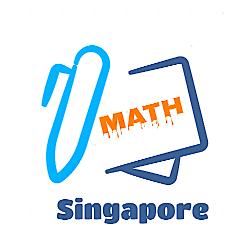新加坡剑桥O水准考试(Singapore-Cambridge General Certificate of Education Ordinary Level Examinations,简称GCE ‘O’ Level),是由新加坡教育部MOE和新加坡考试与评鉴局SEAB共同主办的国家级统一考试,也是新加坡的中学生在4年中学教育结束后参加的考试。
考试一年举办一次,考生可以用获得的成绩为标准申请进入新加坡初级学院、理工学院或工艺教育学院。考试成绩也为英联邦各个国家所承认和接受,可用于申请海外英联邦国家的初级学院或是大学预备班。
贯穿新加坡中学四年教育的,仍是3+1的教学体系,三大模块数学知识和贯穿始终的数学过程思维训练,如下图所示。
数学过程思维这一环节最为关键的是思维技巧和策略思维方法。这部分内容是要求学生在掌握数学知识点的基础上,能活学活用,经过训练,学会常用的思维方法。
新加坡中学二年级的知识点如下。
一、代数部分
N2. Ratio & proporation 比率和比例
2.4. map scales (distance and area)
2.5. direct and inverse proportion
N5. Algebraic expressions&formulate代数表达式/规范化
5.9. expansion of the product of algebraic expressions
5.10. changing the subject of a formula
5.11. finding the value of an unknown quantity in a given formula
5.12. use of:
5.13. factorisation of linear expressions of the form + + +
5.14. factorisation of quadratic expressions 2 + +
5.15. multiplication and division of simple algebraic fractions
5.16. addition and subtraction of algebraic fractions with linear or quadratic denominat
N6. Functions & graphs 函数和图
6.6. quadratic functions y= ax2 + bx + c
6.7. graphs of quadratic functions and their properties:
positive or negative coefficient of 2
maximum and minimum points
symmetry
N7. Equations & inequalities 等式和不等式
7.5. concept of equation and inequality
7.6. solving simple inequalities in the form ax + b <=c and ax + b < c and representing the solutions
on the number line
7.7. graphs of linear equations in two variables ( + = )
7.8. solving simultaneous linear equations in two variables by:
substitution and elimination methods
graphical method
7.9. solving quadratic equations in one variable by factorisation
7.10. formulating a pair of linear equations in two variables to solve problems
二、几何和测量
G2. Congruence & similarity 全等和相似
2.1. congruent figures
2.2. similar figures
2.3. properties of similar triangles and polygons:
corresponding angles are equal
corresponding sides are proportional
2.4. enlargement and reduction of a plane figure
2.5. solving simple problems involving congruence and similarity
G4. Pythagoras’ theorem and trigonometry
4.1. use of Pythagoras’ theorem
4.2. determining whether a triangle is right-angled given the lengths of three sides
4.3. use of trigonometric ratios (sine, cosine and tangent) of acute angles to calculate unknown sides and angles in right-angled triangles
G5. Mensuration
5.6. volume and surface area of pyramid, cone and sphere
三、统计和概率
S1. Data handling & analysis 数据处理和分析
1.5. analysis and interpretation of:
dot diagrams
histograms
stem-and-leaf diagrams
1.6. purposes and uses, advantages and disadvantages of the different forms of statistical representations
1.7. explaining why a given statistical diagram leads to misinterpretation of data
1.8. mean, mode and median as measures of central tendency for a set of data
1.9. purposes and use of mean, mode and median
1.10. calculation of the mean for grouped data
S2. 概率
2.1. probability as a measure of chance
2.2. probability of single events (including listing all the possible outcomes in a simple chance situation to calculate the probability)






















热门跟贴